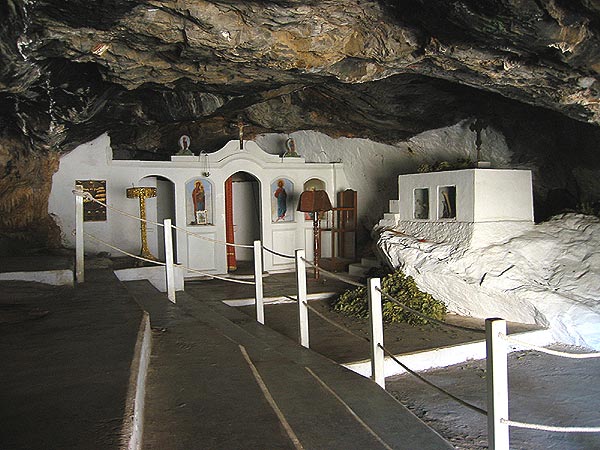Nestled just 3 kilometers from the quaint village of Milatos in the Lassithi Prefecture, Milatos Cave embodies not just the natural beauty typical of Crete but also a poignant chapter in the island’s tumultuous history. While the cave may lack the natural adornments of stalactites and stalagmites, it stands as a sacred site, echoing the courage and tragedy of nearly 3,600 souls who perished within its depths during a grim episode of the Greek Revolution in February 1823.
A Sanctuary Turned Tomb:
As the flames of revolution sought to burn away the chains of Ottoman rule across Greece, Crete, too, rose in defiance. The villagers of Milatos, seeking refuge from the violence that sought to quell their cries for freedom, found sanctuary in the cave. However, this refuge quickly turned into a siege, with Ottoman forces encircling the entrance, condemning those inside to a desperate plight of hunger and thirst.
For two harrowing weeks, from February 3rd to the 15th, the besieged Greeks, driven to the brink of despair, chose to confront their fate head-on rather than perish in darkness. Their valiant rush for freedom, however, ended in tragedy, with most meeting a brutal end at the hands of the Turks. The aftermath saw the survivors shackled and sent to Egypt as slaves, a grim reminder of the cost of their defiance.
A Monument to Memory:
In 1935, a solemn gesture of remembrance transformed the cave into a hallowed ground. A modest church dedicated to Saint Thomas was erected within its walls, alongside a monument housing the bones of those who fell in that dark chapter of Cretan history. To this day, a memorial service is held annually to honor their sacrifice, serving as a testament to the enduring spirit of resistance and the sanctity of memory.
Exploring Milatos Cave:
Spanning 73 meters in length and 63 meters in width, the cave’s vast expanse, totaling about 2,100 square meters, reveals a complex of eight entrances and varied heights. Beyond its historical significance, archaeological discoveries within the cave point to human activity dating back to the Neolithic period, adding layers of historical depth to its already rich narrative.
Visitors looking to pay their respects or simply explore this natural monument can park their cars in the valley below and take a short 200-meter walk along a path that winds through the gorge’s slopes, leading to the cave’s entrance.
Conclusion:
Our visit to Milatos Cave was a profound journey through time, marked by reflections on the resilience of the human spirit in the face of unimaginable adversity. Beyond its geological features, the cave stands as a poignant memorial to those who fought and fell for the promise of freedom, their legacy etched into the very stone, reminding us of the price of liberty and the eternal quest for dignity and justice.
Sorry, no records were found. Please adjust your search criteria and try again.
Sorry, unable to load the Maps API.
